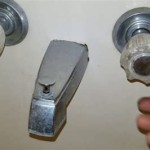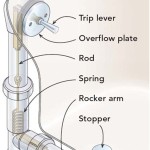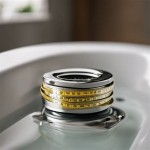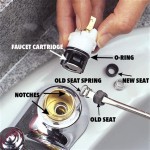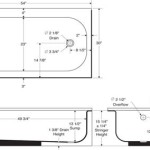How To Test Bathtub Drain - Essential Tips
A smoothly functioning bathtub drain is crucial for maintaining a clean and hygienic bathroom. However, it's common for drains to encounter issues over time, leading to slow drainage or even complete blockages. Knowing how to test your bathtub drain can help you identify and resolve any problems promptly, preventing further damage or inconvenience.
This comprehensive guide will provide you with step-by-step instructions on how to test your bathtub drain, including methods for determining the location of a clog and effective troubleshooting techniques.
Step-by-Step Testing Process
1. Remove Visible Debris
Start by removing any visible hair or debris that may have accumulated around the drain opening. Use a drain strainer or a pair of pliers to remove any large objects that could be blocking the flow of water.
2. Run Hot Water
Turn on the hot water and let it run for a few minutes. The force of the hot water can help dislodge minor clogs and clear away any soap scum or dirt that may have built up in the drain.
3. Check Drainage Rate
Once the water has been running for some time, observe the drainage rate. If the water drains slowly or pools around the drain opening, it indicates a potential clog further down the drainpipe.
4. Remove Drain Stopper
If the water is draining slowly, remove the drain stopper. This will allow you to inspect the drain opening for any visible obstructions or clogs.
5. Use Drain Snake
If you can't locate the clog visually, insert a drain snake into the drain opening. Gently push the snake down the drainpipe, rotating it as you go. This can help break up and remove any clogs that may be out of reach.
6. Pour Drain Cleaner (Optional)
As a last resort, you can try pouring a commercial drain cleaner down the drain. Follow the manufacturer's instructions carefully and allow the cleaner to sit for the recommended time before flushing with hot water.
Troubleshooting Common Drain Issues
If you're experiencing persistent drainage issues, there may be an underlying problem that requires attention.
- Clogged Drainpipe: If the drain snake doesn't clear the clog, the drainpipe may be blocked further down the line. Contact a plumber for professional drain cleaning.
- Broken Drain Assembly: The drain assembly under the bathtub can become damaged or worn over time, leading to leaks or slow drainage. Replacing or repairing the drain assembly may be necessary.
- Clogged Overflow Drain: The overflow drain, located near the rim of the bathtub, can also become clogged. Use a wire hanger or a pipe cleaner to clear any obstructions.
Regularly testing your bathtub drain and addressing minor clogs promptly can help prevent more severe problems. By following these steps and troubleshooting common drain issues, you can maintain a well-functioning bathtub and ensure a comfortable and hygienic bathroom experience.

How To Test Bathtub Drain Plumbing Shorts Homerepairtutor
How To Fix A Slow Bathtub Drain

Is My Bathtub Drain Leaking Benjamin Franklin Plumbing

How To Install New Bathtub Drain Including Measurements

How To Install A Tub Drain 10 Steps With Pictures Wikihow

What Is A Bathtub Drain Kit Hofen

How To Fix A Slow Draining Bathtub 1 Tom Plumber

How To Install A Tub Drain 10 Steps With Pictures Wikihow

How To Unclog A Bathtub Drain Without Chemicals Family Handyman
Noisy Bathtub Drain Diy Home Improvement Forum
Related Posts

